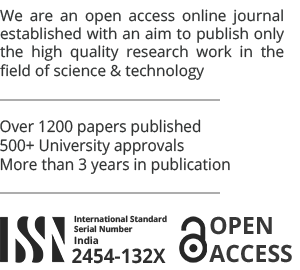Research Paper
Modern algorithm of neural networks
This paper deals with researches and literature reviews on Deep Neural Network. In the area of biometrics, identification, access- control, enforcement, digital identification, surveillance devices and face recognition (FR), defining the technique of human beings using facial imaging, is a multitude of hands-on applications. Coevolutionary neural networks (Cov-Nets) have proved to be efficient for FR, a type of deep networks. Any pre-processing procedures, such as sampling, must be taken for real-time systems prior to use in Cov-Nets. However, full images (all pixel values) are also transferred to Cov-Nets as input and all steps are performed by the network (feature collection, function filtering, training). That's why Cov-Nets is always difficult and time-consuming to introduce. Cov-Nets are at a rising level, with very little precision, but they have a high potential reach. This paper offers a new perspective on the use of a deep neural network for facial recognition. A new approach is being developed in this paper. In this approach, facial features that are extracted are provided as input instead of raw pixel values. This decreases the complexity and gives the Yale data set quality of 97.05 percent.
Published by: Anirban Chakraborty
Author: Anirban Chakraborty
Paper ID: V6I5-1243
Paper Status: published
Published: September 26, 2020
Full Details

